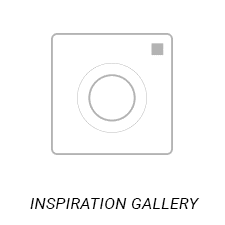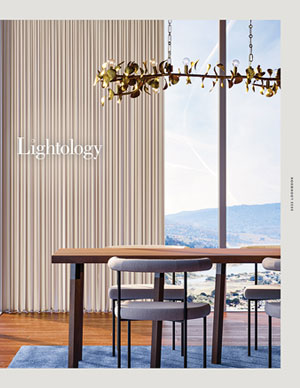- Showroom
- Design Services
- Support Center
- |(866) 954-4489
-
0
Your CartOrder Subtotal0.00
- 0
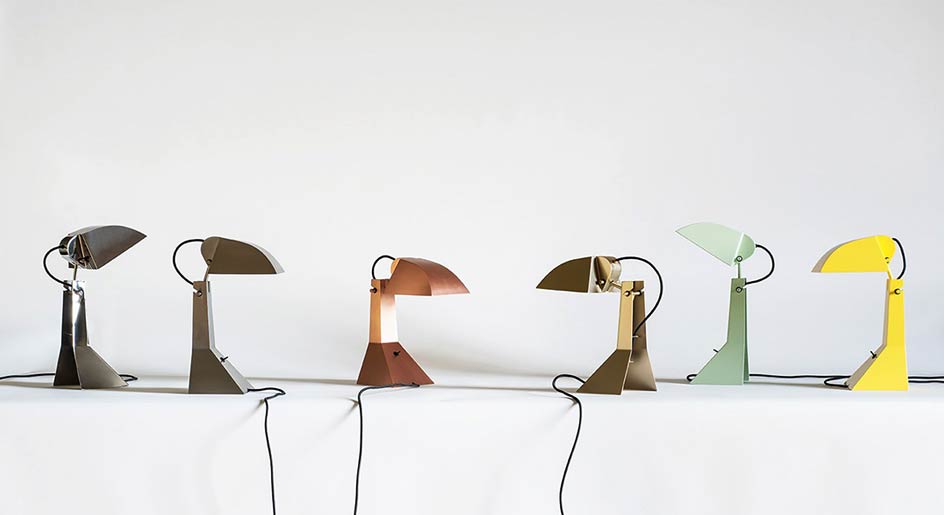
Timeline:
Iconic Italian Lamps
Italy is revered for many things: Food, wine, coffee, fashion -- and in the world of design -- lighting. For decades, Italy has set the bar in contemporary lighting, thanks to forward-thinking pioneers like Gio Ponti and Ettore Sottsass, risk-taking brands like FontanaArte and Flos, and time-honored techniques, like Murano glassblowing. Charting the history of Italian lighting design is no easy task, but these 48 lamps certainly serve as landmarks that helped pave the way for Italy’s lighting renaissance.
1929
Luminator by Luciano Baldessari
for Luceplan
First realized as a mannequin for textiles at the Barcelona exhibition in 1929 (Mies van der Rohe’s Barcelona Pavilion), Luminator was installed as a lighting fixture in a private apartment and published in Casabella in 1933, where Edoardo Persico wrote “ …it is a real mise en scène.”
Shop Similar Items
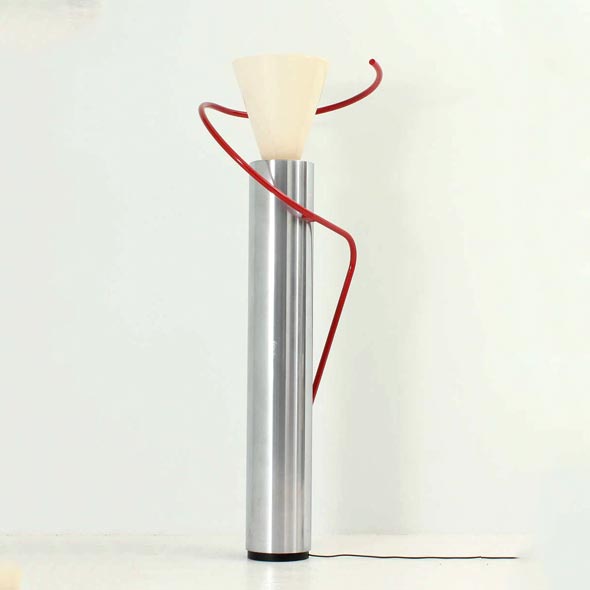
1932
Bilia by Gio Ponti
for FontanaArte
One of the most eclectic characters in design history, Italy’s Gio Ponti did it all, from architecture to graphics, industrial design to art direction. He was an editor-in-chief that founded Domus Magazine, and in 1932, he founded FontanaArte together with Pietro Chiesa. His Bilia design for FontanaArte was so iconic, it’s still in production today.
Shop Bilia
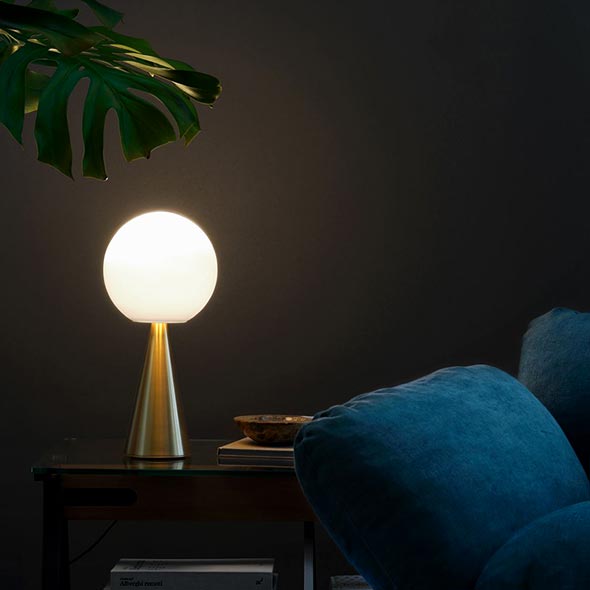
1933
Luminator by Pietro Chiesa
for FontanaArte
Perhaps the first real, industrial production of a fixture with a continuous, elegant line from the base to the stem to the reflector, Pietro Chiesa’s Luminator was adored by Gio Ponti. In fact, a 1949 edition of Domus has Ponti praising the design as one of the most exceptional prototypes turned lighting achievement; “the purest floor lamp ever.”
Shop Luminator
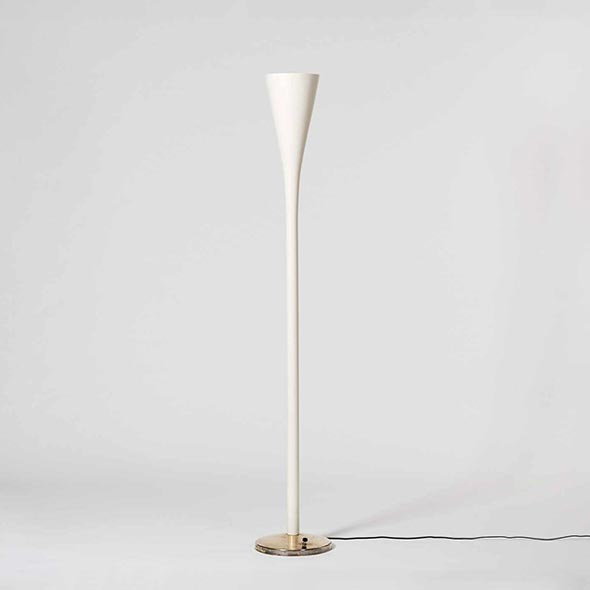
1940
2003 by Gino Sarfatti
for Arteluce
One of the first chandeliers designed for Arteluce, 2003 paved the way for the atomic, “Sputnik” designs of the ‘50s and ‘60s, featuring brass pipes shooting outward from a central point. It remains one of the most inspiring fixtures to this day.
Shop Similar Items
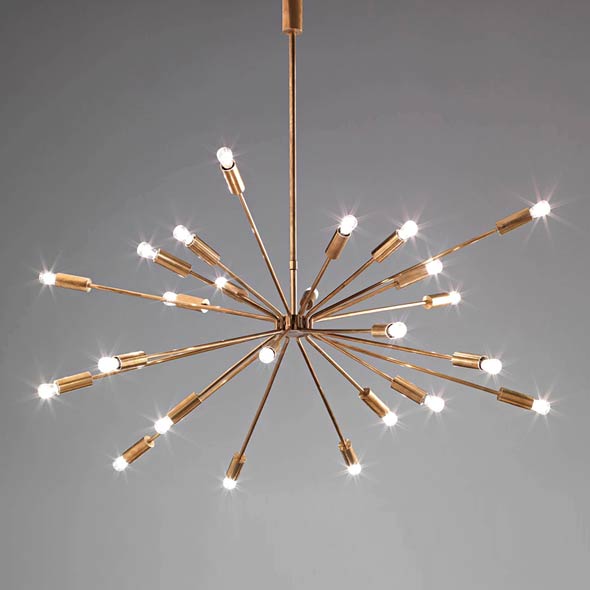
1950
1047 by Vittoriano Vigano
for Arteluce
Designed by acclaimed architect Vittoriano Vigano, 1047 is the perfect marriage of engineering and industrial design. Vigano believed in employing the same principles in urban planning as he did in product design, resulting in a fixture that feels both artistic and architectural.
Shop Similar Items
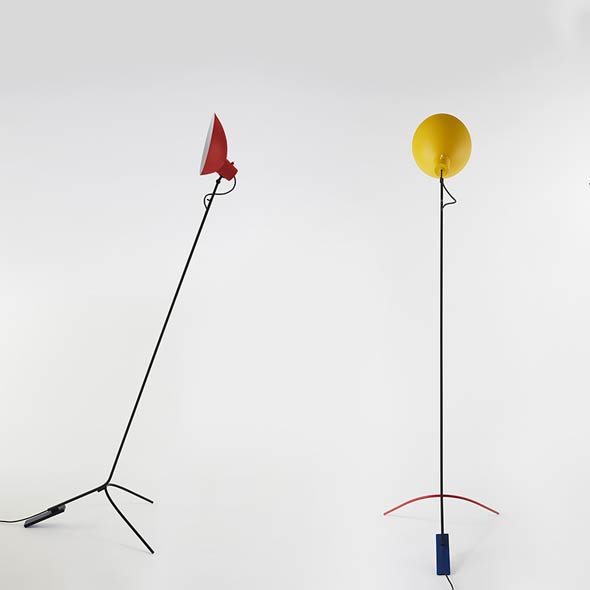
1951
548 by Gino Sarfatti
for Arteluce
One of the most prolific masters of Italian lighting, Gino Sarfatti designed more than 400 lamps over 30 years. As both entrepreneur and designer at Arteluce (which he founded in 1939), his fixtures set the bar in both form and technology. His original design for kinematic junctions is particularly notable, able to move the light source within a space. His 548 design innovatively used the shade as the reflector, widening the angle of the light in ways never seen before.
Shop Similar Items
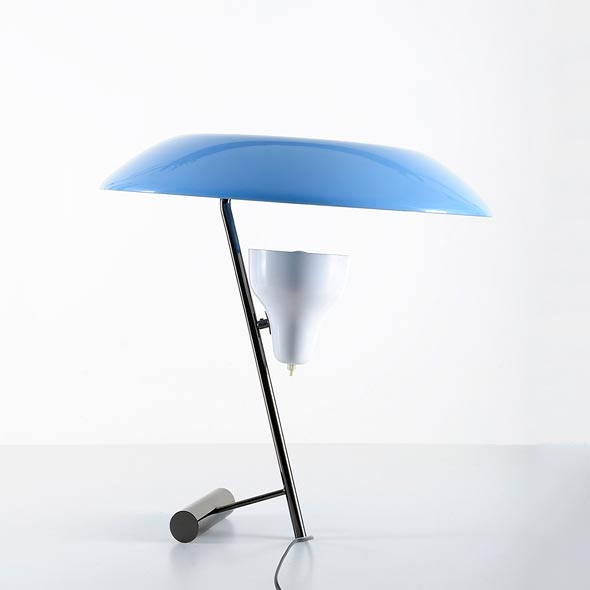
1953
Monachella by Luigi Caccia Dominioni
for Azucena
Born in an aristocratic family from Novara, Dominioni graduated in Architecture in Milano before opening his practice in 1938 with the Castiglioni brothers. The end of the ‘40’s sparked a collaboration with Azucena, where Ignazio Gardella helped bring Monachella to life, an icon for its simple elegant lines and plain materials.
Shop Similar Items
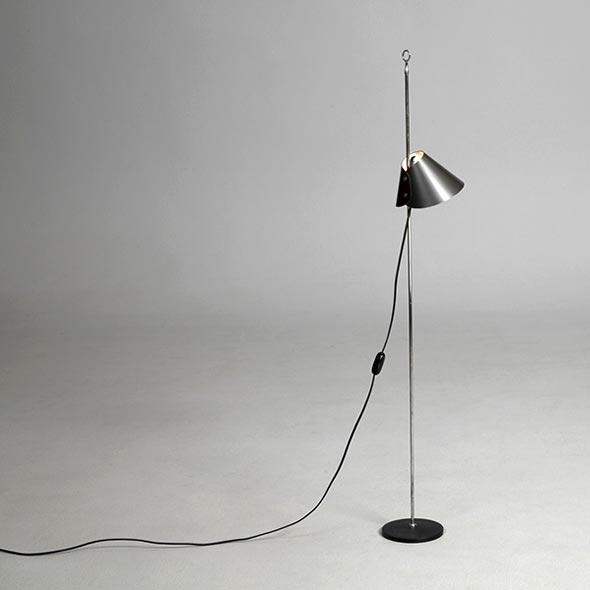
1954
1853 Glass Lamp by Max Ingrand
for FontanaArte
Once the Artistic Director for FontanaArte, French master glass worker and decorator Max Ingrand used his expertise to create the timeless and revered Glass Lamp, which surprisingly casts light from the body. The design is still in production today.
Shop Glass Lamp
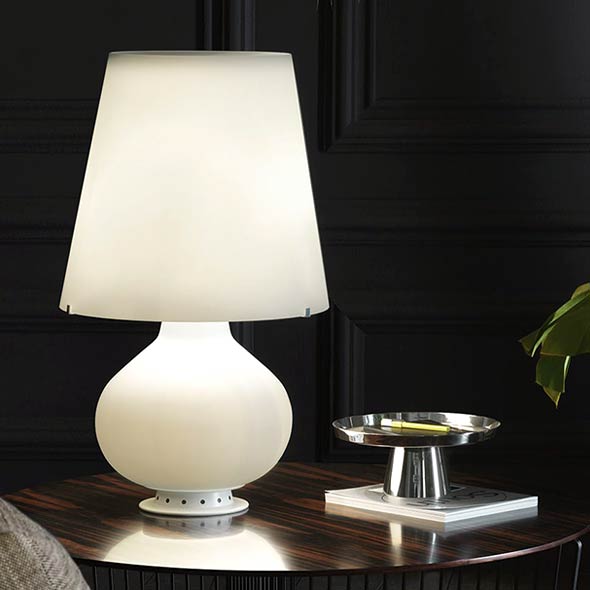
1955
Stilnovo chandelier by Gaetano Scolari
for Stilnovo
Legends in the first wave of Italian design post-World War II, Stilnovo started in 1946 by Bruno Gatta, partnering with several now-iconic designers in their early days, including Danilo and Corrado Aroldi, Gaetano Sciolari, Alberto Fraser, Joe Colombo and Ettore Sottsass. Gaetano’s Stilnovo chandelier is a landmark in Stilnovo’s history, with its penchant for molecular, geometrically balanced form and--at the time--new materials, including opaline glass, perspex and brass.
Shop Similar Items
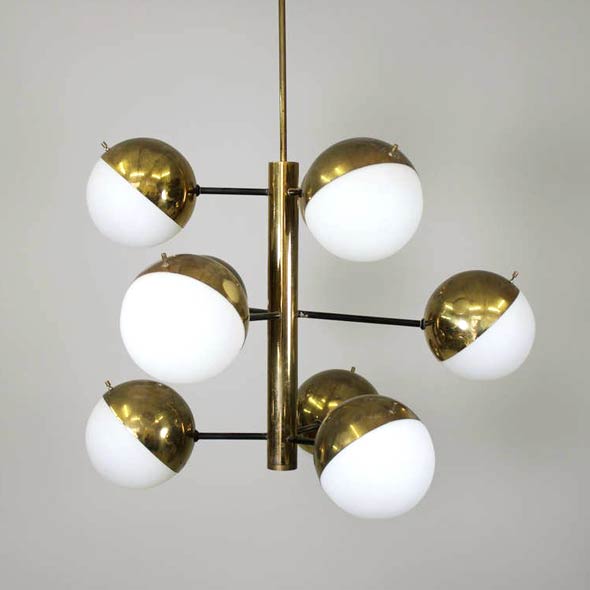
1957
Fato by Gio Ponti
for Arredoluce
With a slight nod to Cubism and Piet Mondrian, Gio Ponti’s famous Fato lamp for Arredoluce features geometrical metal screens to create a connection between void and solid. Enclosed in a square frame, the piece truly serves as a functional work of art.
Shop Similar Items
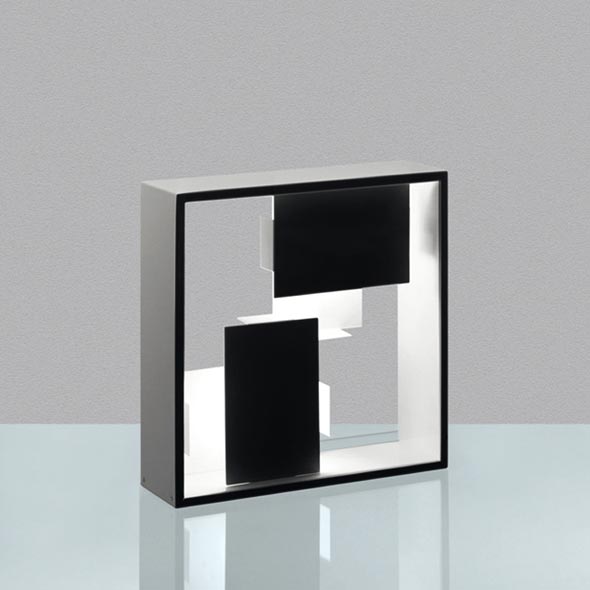
1960
237 by Gino Sarfatti
for Arteluce
One of Arteluce’s most iconic bestsellers, the simple, refined 237 by Gino Sarfatti bridged the gap from mid-century modern to sixties futurism. The polished frame and glass globe became a symmetrical statement piece in Arteluce’s 1960 flagship store in Via Della Spiga in Milano, designed by Vittoriano Viganò.
Shop Similar Items
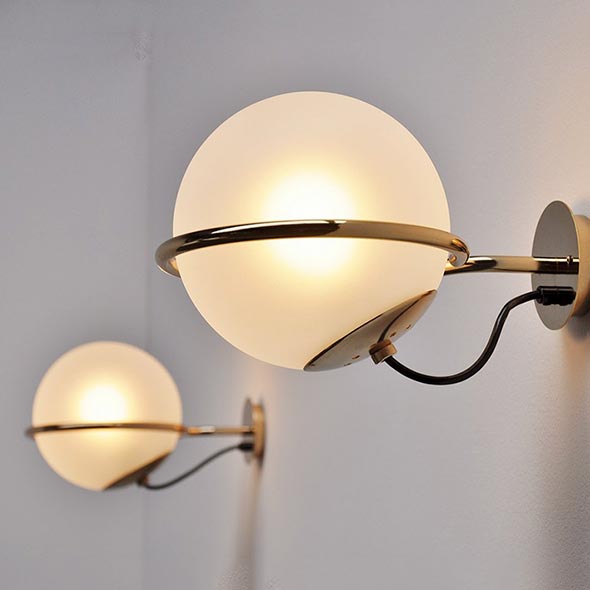
Gatto by Achille & Pier Giacomo Castiglioni
for Flos
Designed in the famous “cocoon” style the Castiglioni brothers were known for, Gatto (or “little cat”), wraps a steel structure with a white powder coat and soft, webby resin. The result is a soft, warm glow, like a charming and curvaceous circus tent.
Shop Gatto
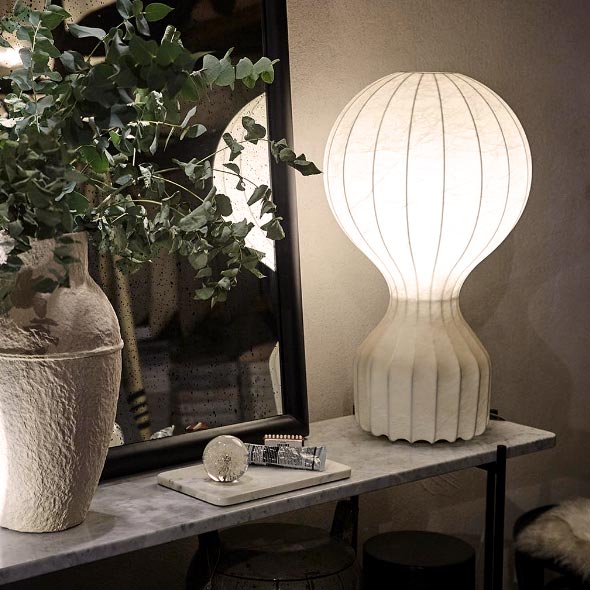
1962
Arco by Achille & Pier Giacomo Castiglioni
for Flos
In 1962, several now iconic lamps designed by the famous Castiglioni brothers went to production with Flos. After experimenting with their acclaimed “cocoon”style, the brothers began paring objects down to their minimal, functional form. With its white, marble base, thin aluminum arc and perforated lampshade, Arco became a design that would resonate for decades. Even the hole in the marble base was designed for lifting -- simplicity proved a lasting aesthetic.
Shop Arco

Taccia by Achille & Pier Giacomo Castiglioni
for Flos
Designed to reduce complex, mechanical devices, Taccia is a study in sculpture and simplicity. The base and reflector are independent, with the bulb inside the base, supporting the Murano glass diffusor. The result is a stunning landmark in Italian lighting.
Shop Taccia
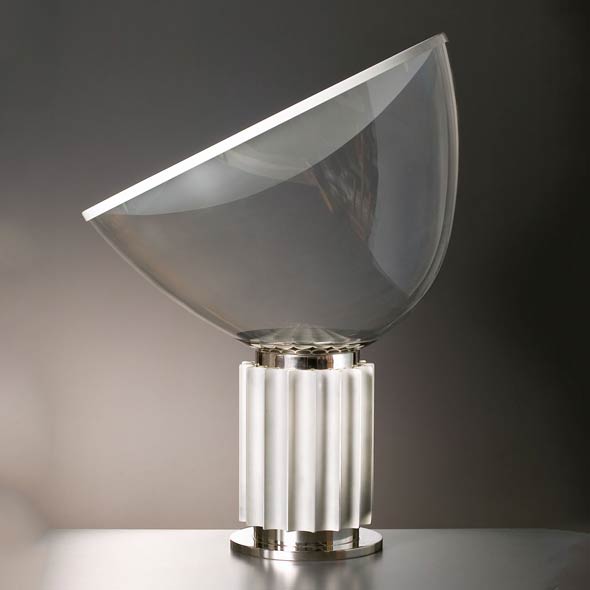
Acrilica by Joe Colombo
for O-luce
One of Italy’s most acclaimed designers, Joe Colombo (born Cesare Colombo)started out as a painter and sculptor, bringing his artistic flair to the design world in an entirely unique way. His love for experimentation lead him to pioneer plastic and acrylic manufacturing. Acrilica was Colombo’s first project for O-luce, a lamp known for its incredibly sculptural curve and inventive illumination. Acrilica won the gold medal at the 13th Triennial in Milan.
Shop Similar Items
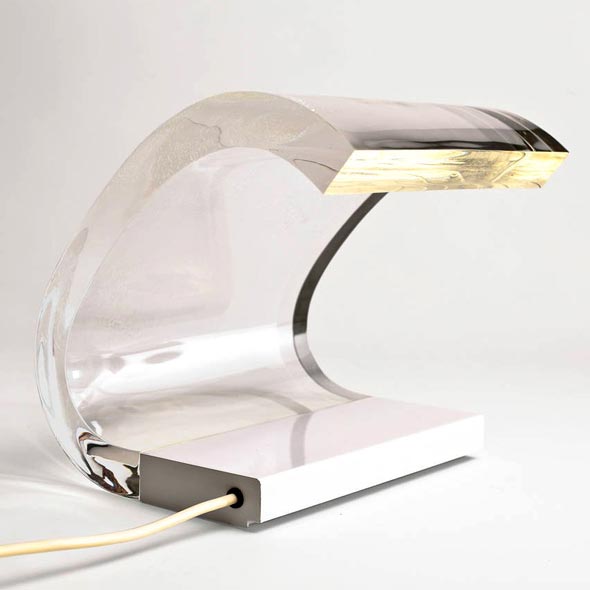
1963
E63 by Umberto Riva
for Bieffeplast, FontanaArte
After studying in Venice under Carla Scarpa, Umberto Riva went on to open his own architecture practice in Milano and became one of the masters in Italy, known for his meticulous eye for detail. E63 / Robot was initially designed as part of a competition, taken into production in 1969 by two different manufacturers (Bieffeplast and FontanaArte). The open-back construction made it a unique table lamp that actually doubled as a wall lamp.
Shop Similar Items
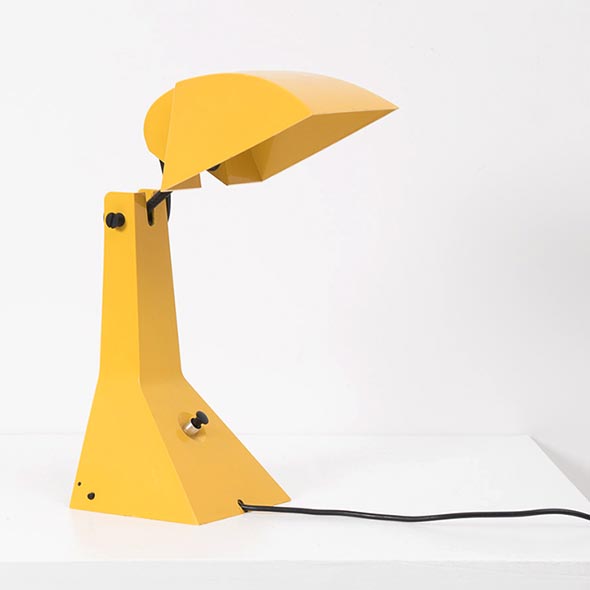
1964
Nesso by Città Nuova Group
for Artemide
Crafted from polyester with reinforced fiberglass, the Nesso table lamp is a polished, space age form, perfectly suited for ‘60s futurism. When turned on, the whole form becomes luminous and each part contributes to the light diffusion.
Shop Nesso
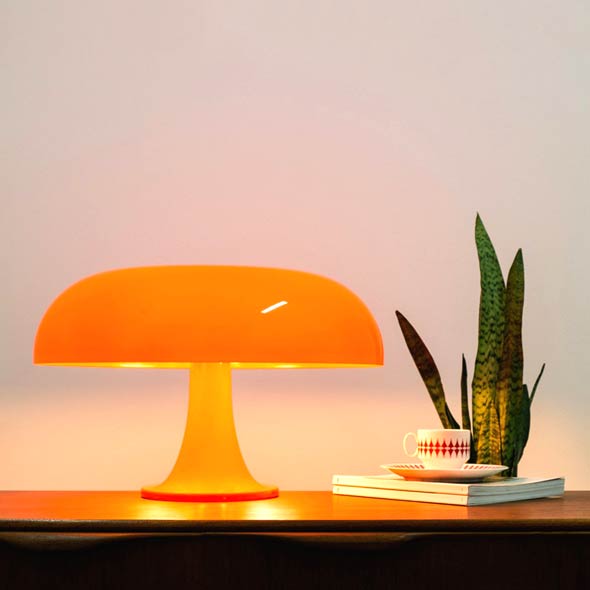
1965
Eclisse by Vico Magistretti
for Artemide
Vico Magistretti began his architecture career rebuilding the cities of Italy after the 2nd World War, relying heavily on expansive, open spaces and natural lighting. His Eclisse table lamp plays off that same idea of open/closed space and nature, allowing you to move the reflector like that of the moon in front of the sun. Fully open allows for bright, direct light; fully closed mimics a full eclipse, with a striking ethereal glow.
Shop Eclisse
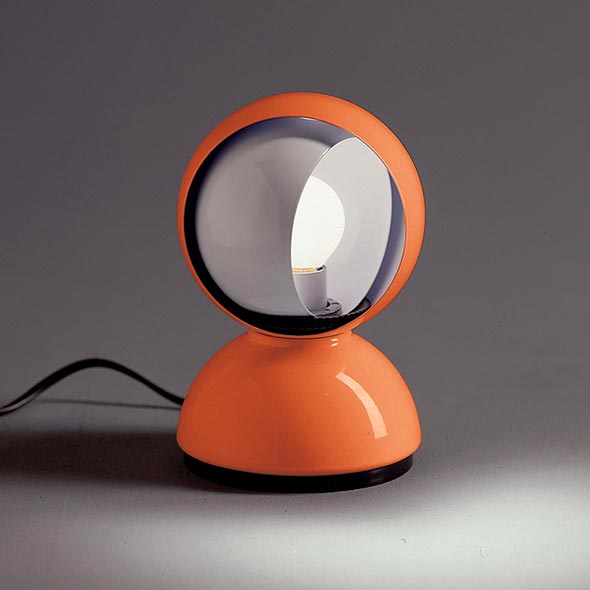
1966
Spider by Joe Colombo
for O-Luce
Designed with functionality at the forefront, Joe Colombo’s Spider won the Compasso d’Oro award in 1967, thanks to its clean form, tilting head and unique, horizontal slot for the light bulb.
Shop Spider

Coupè by Joe Colombo
for O-Luce
Part of the permanent collections at the MoMA in New York and the “Neue Sammlung” Museum in Munich, Joe Colombo’s Coupè is a sublime example of form meets function, with a stove-enamelled metallic reflector that tilts and turns, and a sleek and stylish horizontal cutout. In 1968 Coupé won the "International Design Award" from the American Institute of Interior Designers, in Chicago.
Shop Coupè
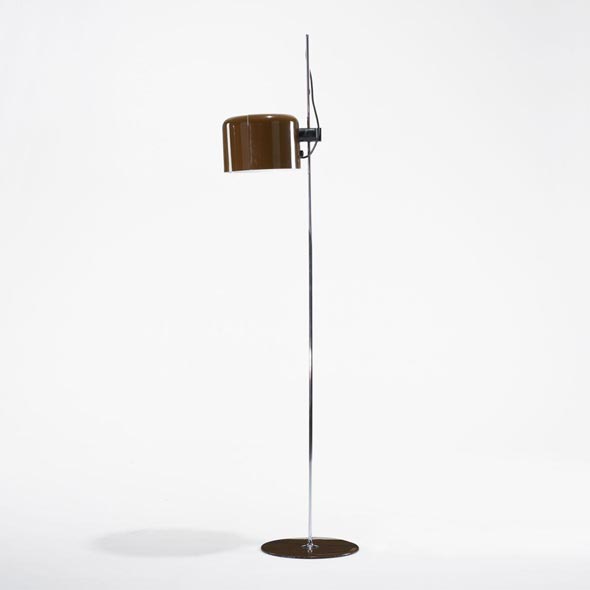
Periscopio by Danilo and Corrado Aroldi
for Stilnovo
Exhibited at New York’s New Domestic Landscape in 1968, the Periscopio desk lamp checks several boxes: Functional, playful, whimsical. The minimalist form uses a flexible, rubber joint, allowing it to be placed in virtually any position.
Shop Similar Items
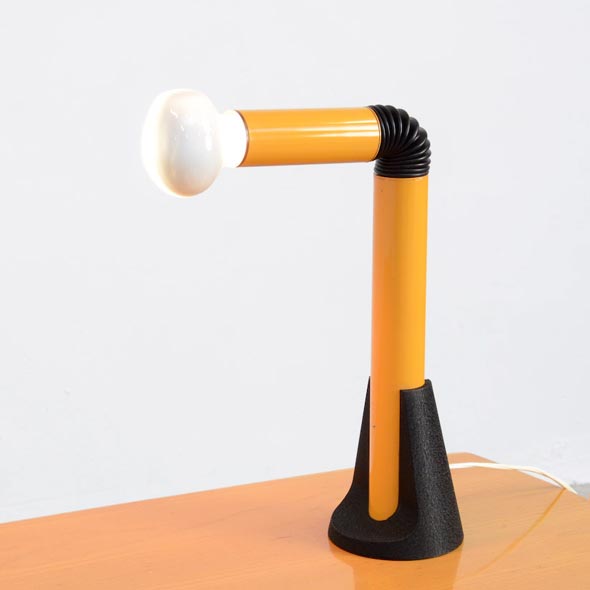
1968
Flash by Joe Colombo
for O-Luce
Reflecting the innovative spirit of its creator Joe Colombo, Flash draws clear inspiration from flashbulb cameras. The fixture was concepted as a full lighting system, with a set of frames and bases allowing you to transition the light into a floor, wall or desk lamp.
Shop Similar Items

602 by Cini Boeri
for Arteluce
In a discipline and era dominated by men, Cini Boeri broke the mold and offered a refreshing new perspective. A frequent collaborator with both Gio Ponti and Marco Zanuso, Boeri designed a series of unforgettable buildings and interiors, always focusing on usability and freedom. Her 602 lamp is a clean, pipe-like form with a turnable arm that offers both useful and playful flexibility.
Shop Similar Items
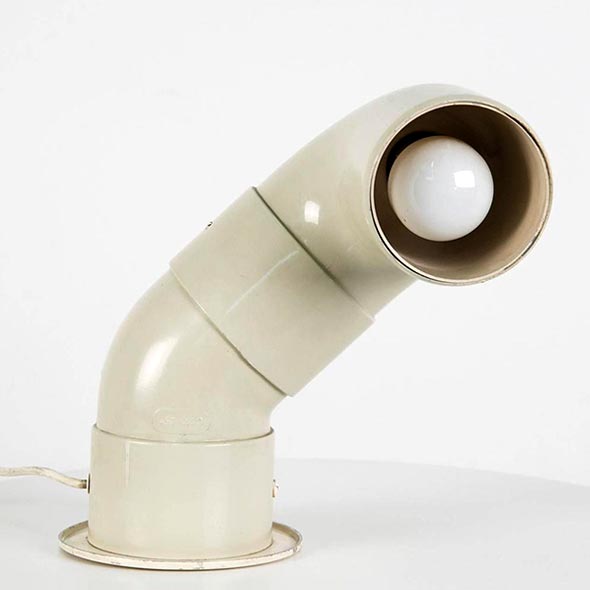
KD 27 by Joe Colombo
for Kartell
In the late ‘60s, as Space Age design was in its prime, many designers turned to polished, globular forms instead of the sharp angles of the past. KD 27 was no exception. The clean and curvaceous design allows it to serve as a soft, warm table lamp, or it can be stacked like a customizable floor lamp.
Shop Similar Items
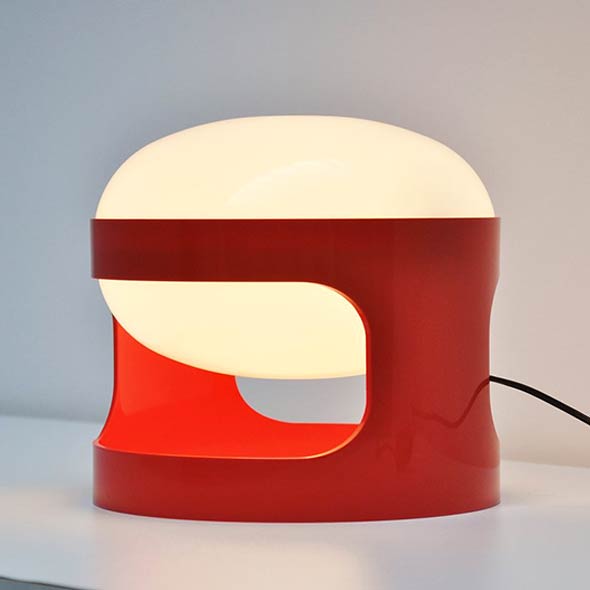
Biagio by Tobia Scarpa
for Flos
Carved from a single piece of Carrara marble, Tobia Scarpa’s Biagio lamp sits right at the intersection of luxury and contemporary lighting. With soft curves and sharp angles, the ultramodern shape proves that lighting and sculpture go hand-in-hand.
Shop Biagio
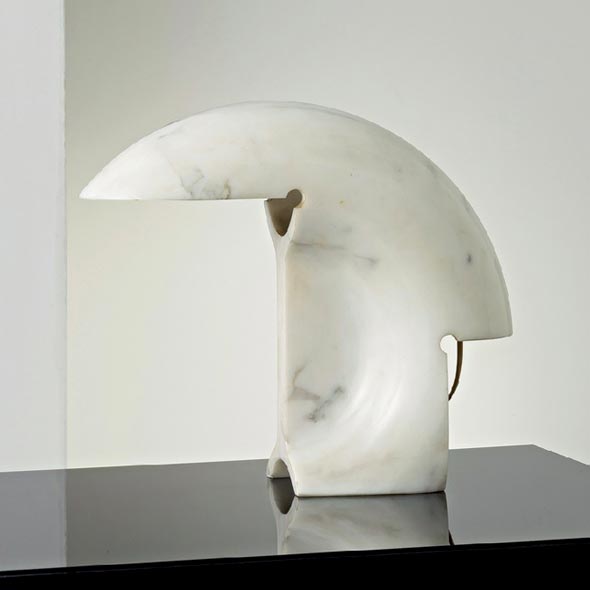
1969
Boalum by Livio Castiglioni and Pio Manzù
for Artemide
The embodiment of lighting flexibility, Boalum is like a futuristic space worm from a Stanley Kubrick film. Inspired by the movement and shape of a snake (a boa that illuminates … Boalum), the semi-transparent tubular body can be coiled, extended or compressed to fit any size space.
Shop Similar Items
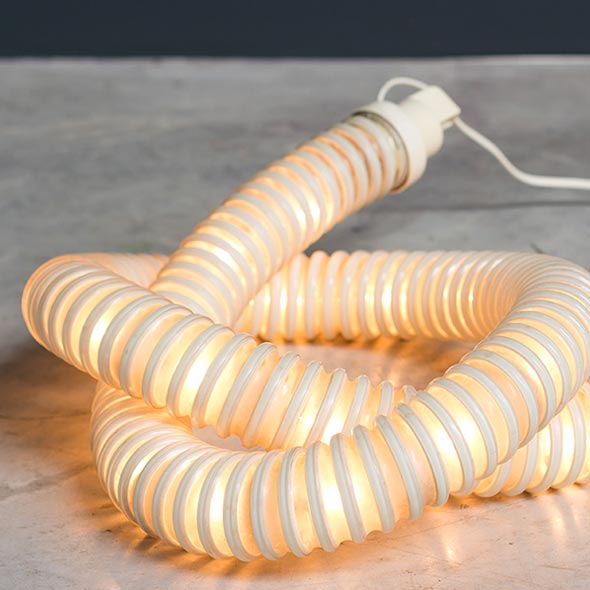
1970
Samurai by Shigeaki Asahara
for Stilnovo
Designed by Shigeaki Asahara for the Italian manufacturer, Stilnovo, the Samurai Desk Lamp is the perfect addition to any work space. With an adjustable arm and a dimmer incorporated into the base of the lamp, Samurai fixtures never fail to appeal to minimalist lovers and design enthusiasts.
Part of the Light Art Collection, on display at the Lightology showroom.
Shop Similar Items

1971
Parentesi Achille Castiglioni and Pio Manzù
for Flos
Originally concepted as a light sliding up and down a boom, held in place by a screw, designer Pio Manzù decided to take the physics one step further. The result: Parentesi, a metal chord bent inside a rod creating constant friction, holding the light in place without the use a screw. It’s a study in minimalist ingenuity.
Shop Parentesi
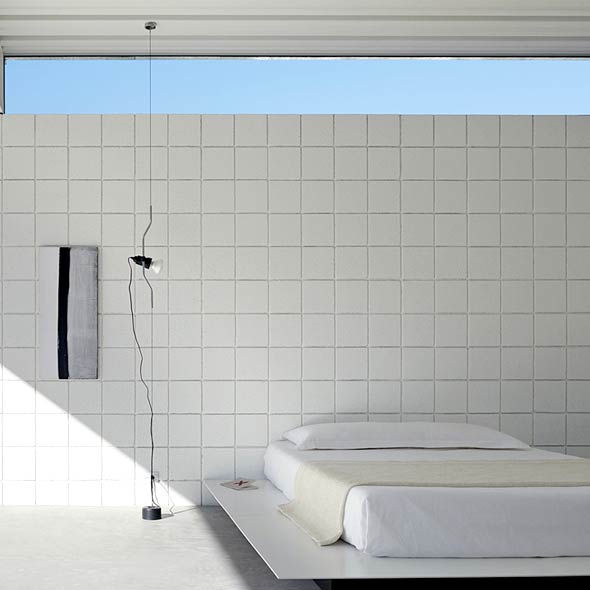
1972
Tizio by Richard Sapper
for Artemide
Prolific designer Richard Sapper, together with Marco Zanuso, designed some of the most memorable products of the ‘60s and ‘70s, from the Grillo folding telephone to the Algol TV. The Tizio for Artemide went on to become a pillar in desk lamp design, featuring a transformer in the base that powers the lamp through rods and press button joints. The counterbalanced engineering allows for precise positioning, making it one of the most adjustable and recognizable desk lamps to this day, earning it several awards including the Compasso d’Oro in 1979.
Part of the Light Art Collection, on display at the Lightology showroom.
Shop Tizio
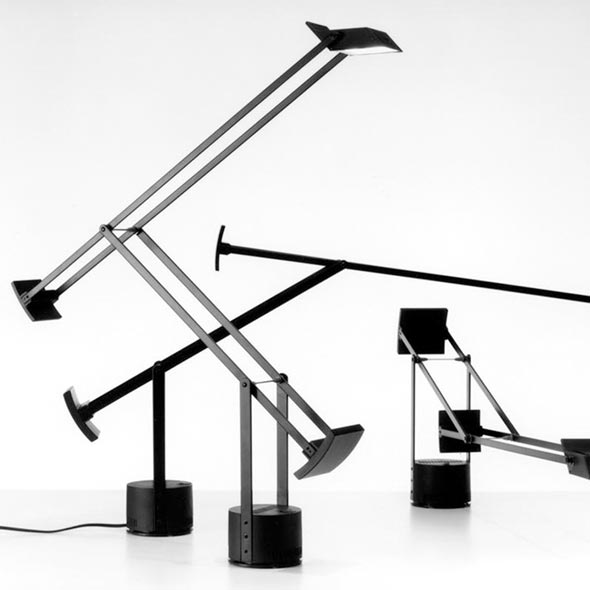
1973
265 by Paolo Rizzatto
Minimal aesthetic, maximum flexibility, Paolo Rizzato’s 265 wall light swings, pivots and twists to direct light exactly where you need it. The clean, simple form steered away from the rounded, plastic Spage Age vernacular so many designers were still using at the time, paring the fixture down to its purest functional form.
Shop 265
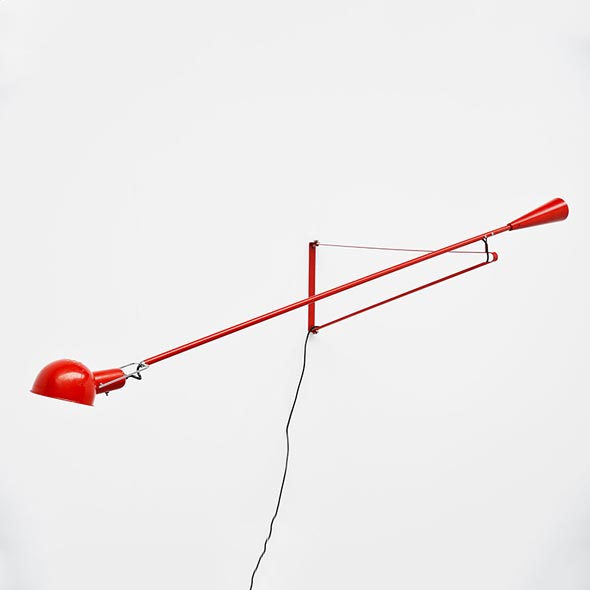
1976
Aggregato by Enzo Mari
for Artemide
An elegant way to both hide the cord and adjust the height, Enzo Mari’s Aggregato lamp took the minimal, functional aesthetic of the time and dressed it up. The result is both stunning and simple.
Shop Similar Items
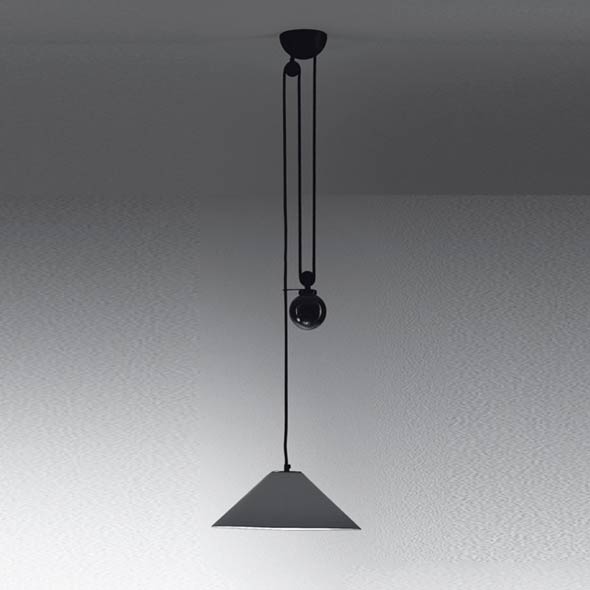
1977
Atollo by Vico Magistretti
for O-luce
A true icon in Italian design, Atollo appears to defy physics: A dome balancing delicately on the very tip of a conical cylinder. The soft glow creates a hemispheric effect, like gazing out onto a horizon. Refined, geometric, it’s no surprise that Magistretti’s design won the most prestigious prize in Italian design, the Compasso d’Oro.
Shop Atollo
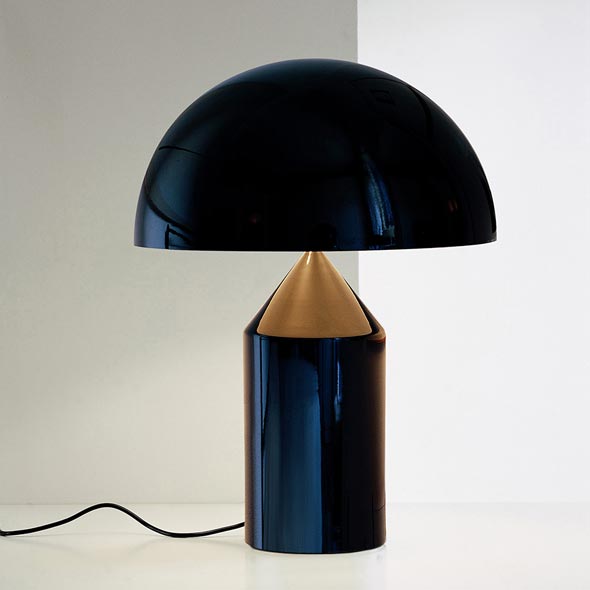
1980
Tokio by Asahara Shigea
for Stilnovo
The Tokio Table Lamp is a timeless fixture designed by Asahara Shigeaki for Italian lighting manufacturer, Stilnovo. The lamp is highly adjustable with a maximum height of 64 centimeters. Featuring a mailbox-like shade supported by four adjustable arms, allowing the lamp is capable of moving in all directions. With a dimmer and sliding switch cleverly concealed within the base, Tokio lamps are perfect atop home offices and work desks alike.
Part of the Light Art Collection, on display at the Lightology showroom.
Shop Similar Items
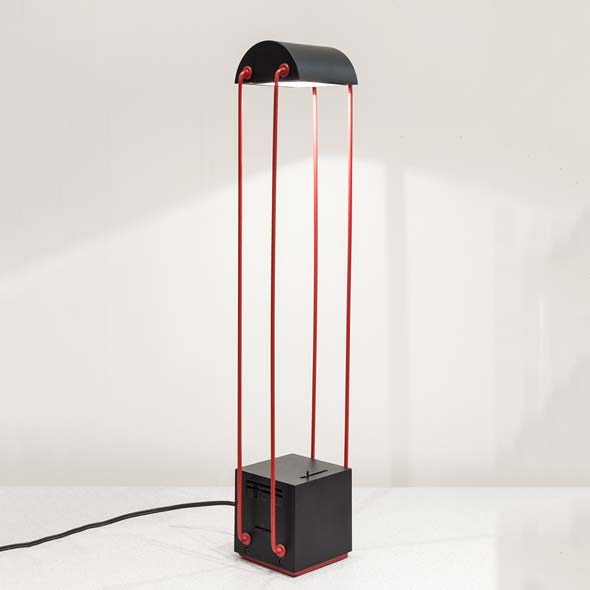
Ziggurat by Asahara Shigea
for Stilnovo
Designed by Shigeaki Asahara for Stilnovo, the Ziggurat Table Lamp has a base made from thick lacquered metal and is enhanced by a brass ring on both the base and the top of the trunk. With a shade made from Murano glass, Ziggurat lamps add warm illumination while offering your space a vintage feel.
Part of the Light Art Collection, on display at the Lightology showroom.
Shop Similar Items
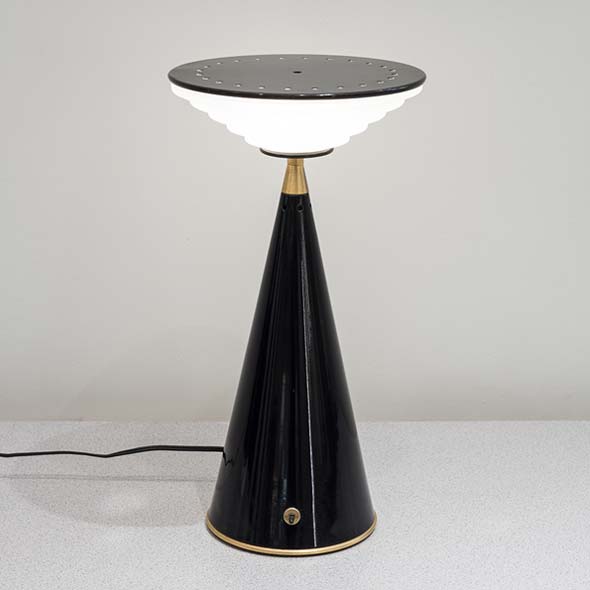
Gibigiana by Achille Castiglioni
for Stilnovo
Designed by Achille Castiglioni, the Gibigiana Table Lamp is the epitome of iconic Italian lighting. The Gibigiana features an aluminum reflector, which in turn provides reflected light - perfect everywhere from bedside tables to home offices. With a base made from anthracite painted steel, Gibigiana lamps are not only built to last but offer design that never goes out of style.
Part of the Light Art Collection, on display at the Lightology showroom.
Shop Similar Items
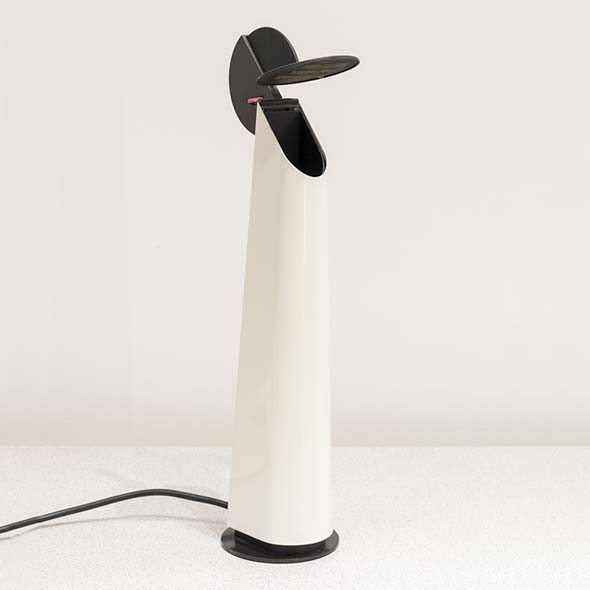
1981
Ashoka by Ettore Sottsass
A truly prolific figure in the world of design, Ettore Sottsass designed some of the first computers and portable typewriters in the ‘60s, eventually pioneering the Memphis movement of the ‘80s. Ashoka serves as a mascot for the movement, epitomizing the main characteristics: Color, scale, whimsy and a touch of imperfection or handmade. The Ashoka lamp went on to travel the world, as part of the infamous Memphis exhibition.
Shop Similar Items
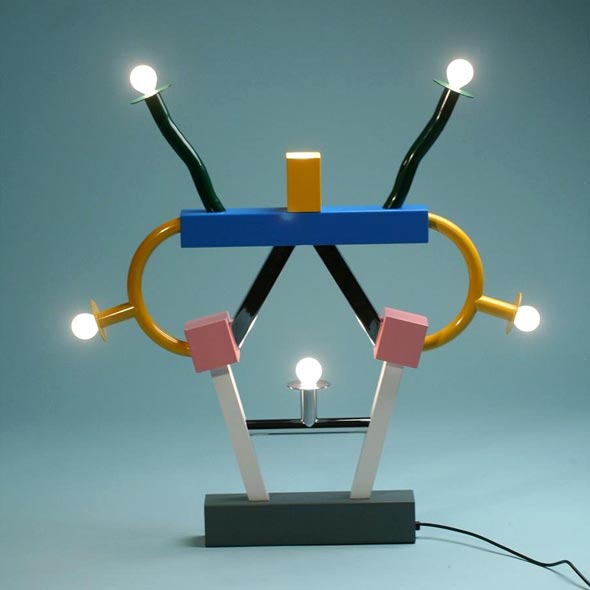
Super by Martine Bedin
Produced for the Memphis Group’s first exhibition, the Super lamp was described by the designer as "a small dog that I could carry with me" With exposed light bulbs lining a half-circle and four wheels, the whimsical fixture feels more like a pet dinosaur, able to be pulled around the room.
Shop Similar Items

1985
Nastro by Alberto Fraser
for Stilnovo
Scottish designer Alberto Fraser celebrates lighting down to its raw form, letting the rainbow-colored cabling serve as the focus on the Nastro table light. The flexible PVC/cable stem retracts and moves with a sort of vibrant grace, inspiring the lamps very name: Nastro, or “ribbon” in Italian.
Shop Similar Items
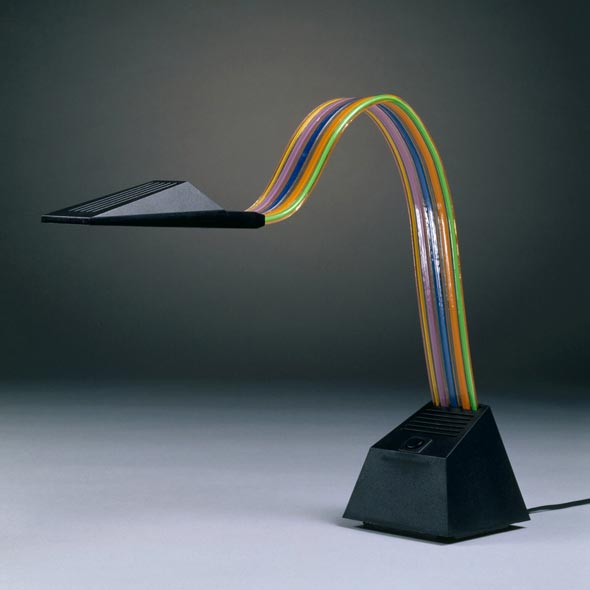
1987
Tolomeo by Michele de Lucchi & Giancarlo Fassina
for Artemide
Perhaps the most flexible desk lamp on the market, even today, Tolomeo quickly became a bestseller for Artemide. Relying on the technology of the time, Lucchi and Fassina were able to create something modern, sophisticated, lightweight and flexible, becoming the litmus test many of today’s desk lamps measure up to.
Shop Tolomeo
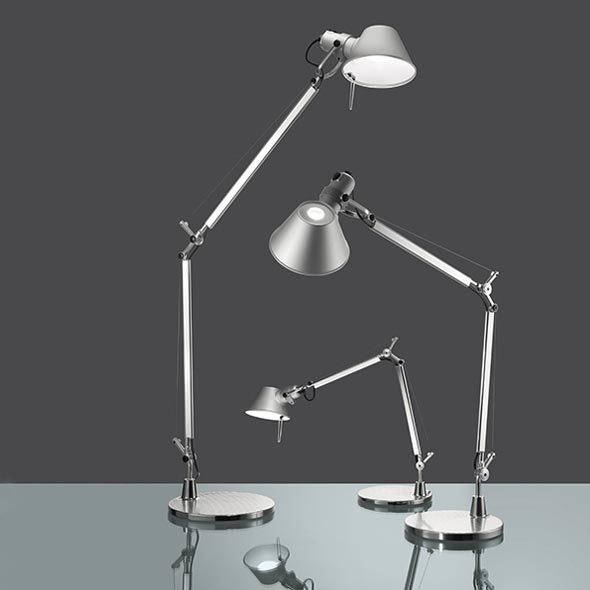
1992
Orbital by Ferrucio Laviani
for Foscarini
If the ‘80s were about perfection and computer-generation, the ‘90s deconstructed it. Orbital draws clear inspiration from ‘80s aesthetic--color, whimsy, scale--but pulls it apart with a unique twist. Primary colors replaced the neons and pastels of Memphis, and meticulous forms evolved back to organic shapes, still with the aid of modern technology.
Shop Orbital
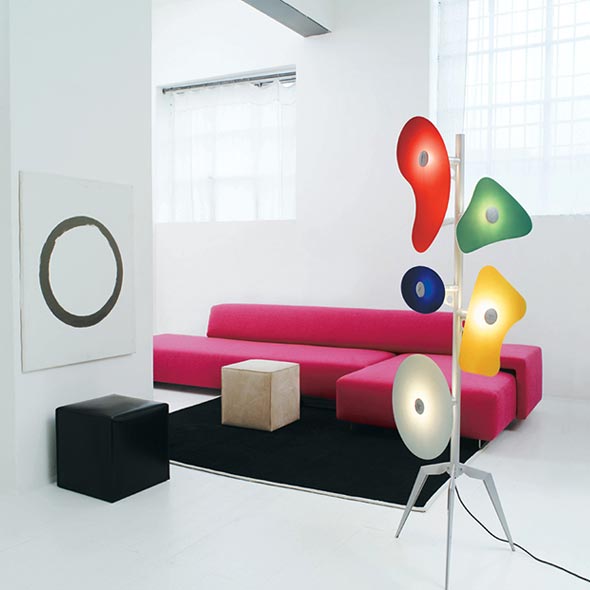
2009
Hope by Paolo Rizzatto & Francisco Gomez Paz
for Luceplan
With small-batch production and new, lightweight technology, more and more designs emerge each year, making it hard to pinpoint which will leave a lasting mark. Hope pulls together many of the characteristics found in today’s fixtures. Iridescent, futuristic materials, organic shapes, laser-cut precision and energy-efficient technology embody a moment in design we’ll fondly look back on.
Shop Hope





